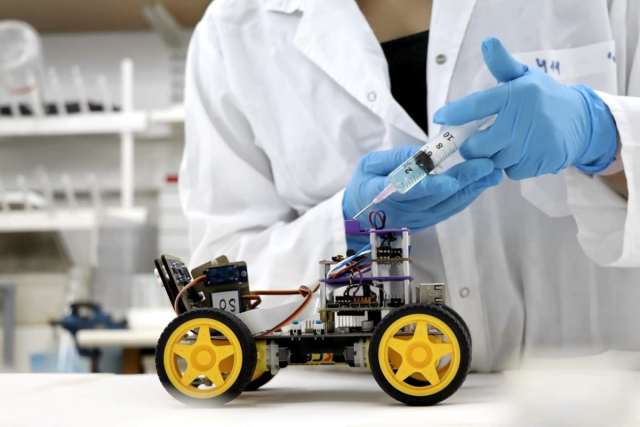Israeli scientists have connected a locust antenna to a machine equipped with artificial intelligence. Such a system is able to distinguish the most subtle odors and move on wheels to find their source.
Modern robots make good use of video cameras, pressure sensors, lidars and other tools for orientation in the world around them. However, the perception of volatile substances is still a considerable difficulty for them. The maximum that can be done for this is to install gas analyzers on board, bulky and capricious. Meanwhile, such an ability would be extremely useful.
It would open a new channel for machines to perceive the world around them, would allow them to better monitor, diagnose diseases, search for people under rubble or leaks in industrial production. All this encourages the development of more compact devices for the analysis of odors — " electronic noses ". However, Israeli scientists took an alternative path and decided to use detectors borrowed from nature. The robot equipped with sensitive locust antennas is described in an article published in the journal Biosensors and Bioelectronics.
Tel Aviv University Arthropod antennae (antennae) are sensory organs that in different species may be responsible for vision, hearing, touch, but most often participate in the work of smell. In locusts, their sensitivity is so great that scientists are inspired by them when developing explosive detectors. Maoz Ben and his colleagues from Tel Aviv University used locust antennae directly by removing one tendril from the insect and connecting it to the electronic system of a wheeled robot.
The signal from the olfactory receptors of the antenna was transmitted to artificial intelligence, which was trained to recognize eight different odors, including the aromas of geranium, lemon and marzipan. The system was able to reliably distinguish them all. Moreover, additional experiments have shown that the AI connected to the tendril allows you to detect more subtle odors — for example, recognizing different varieties of Scotch whiskey. According to scientists, such a system is 10 thousand times more sensitive than the tools used today.
The wheeled platform allows the car not only to detect odors, but also to react to them. Therefore, scientists are planning to develop algorithms in the near future, thanks to which the robot will be able to follow the desired fragrance and find its source. This will make it extremely useful for searching for missing people, leaks from pipelines, explosive devices, as well as many other practical tasks.

